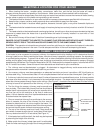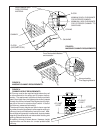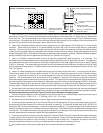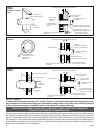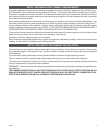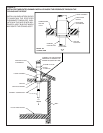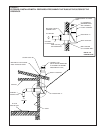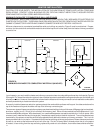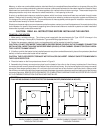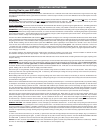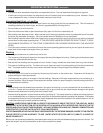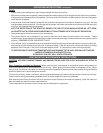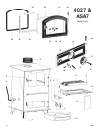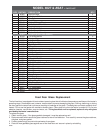
12 USSC
HEATER INSTALLATION
CAUTION: FOR YOUR SAFETY, THE INSTALLATION OF THIS HEATER MUST COMPLY WITH LOCAL CODES AND
REGULATIONS. CONTACT LOCAL BUILDING OR FIRE OFFICIALS ABOUT INSPECTION TO ASSURE PROPER
COMPLIANCE WITH LOCAL CODES AND REGULATIONS.
MINIMUM CLEARANCES TO COMBUSTIBLE WALL AND CEILINGS
CAUTION: MOST WALLS AND CEILINGS CONTAIN WOOD EVEN THOUGH THEY ARE MADE OF SHEETROCK OR
PLASTER ON THE OUTSIDE. THESE WALLS AND CEILINGS CAN CATCH FIRE FROMTHE HOT WATER HEATER OR
CHIMNEY CONNECTOR IF HEATER AND CHIMNEY CONNECTOR ARE NOT PROPERLY INSTALLED.
Minimum clearances to unprotected combustible walls and ceilings as noted by Figure 8 must be maintained. Drapes,
curtains, furniture and other combustible materials should be kept much further away from the heater chimney connector
to avoid a fire.
FIGURE 8 -
MINIMUM CLEARANCES TO COMBUSTIBLE MATERIALS (IN INCHES)
f you choose to, you may install the heater and chimney connector closer to combustible surfaces than indicated by Figures
2 through 4 IF a clearance reduction system is also installed to protect combustible ceilings and walls near the heater and
chimney connector. However, there are limits to how close the heater and chimney connector can be installed to combustible
surfaces protected by a clearance reduction system.
A correctly installed clearance reduction system protects the combustible surfaces well beyond the sides and above the
top of the heater and beyond the sides and top of the chimney connector pipe.
Two common types of clearance reduction systems use sheet metal with a minimum thickness of 28 gauge (galvanized steel,
aluminum, copper) or a 3-1/2 inch (4 inch nominal) thick masonry wall. Either of these materials must be spaced out 1 inch
from the combustible surfaces. With sheet metal, non-combustible spacers are used to maintain the 1 inch air space. With
a masonry wall, metal wall ties and furring strips, if needed are used to anchor the brick to the wall. To avoid excessive heat
transmission, the spacers or wall ties should not be placed directly behind the heater or chimney connector. The 1 inch air
space provides free air circulation. It is essential that there be openings at the top and bottom of these clearance reducers
so cool air can enter at the bottom and hot air exit at the top. It is the "chimney effect" whereby when the air in the space
is heated, it rises exiting from the top and being replaced by cooler air at the bottom, that makes these shields effective.
CEILING CEILING
BACK WALL
BACK WALL
BACK WALL
SIDE WALL
WALL
32
21
32
17
21
32
21
17
CORNER
INSTALLATION
32



